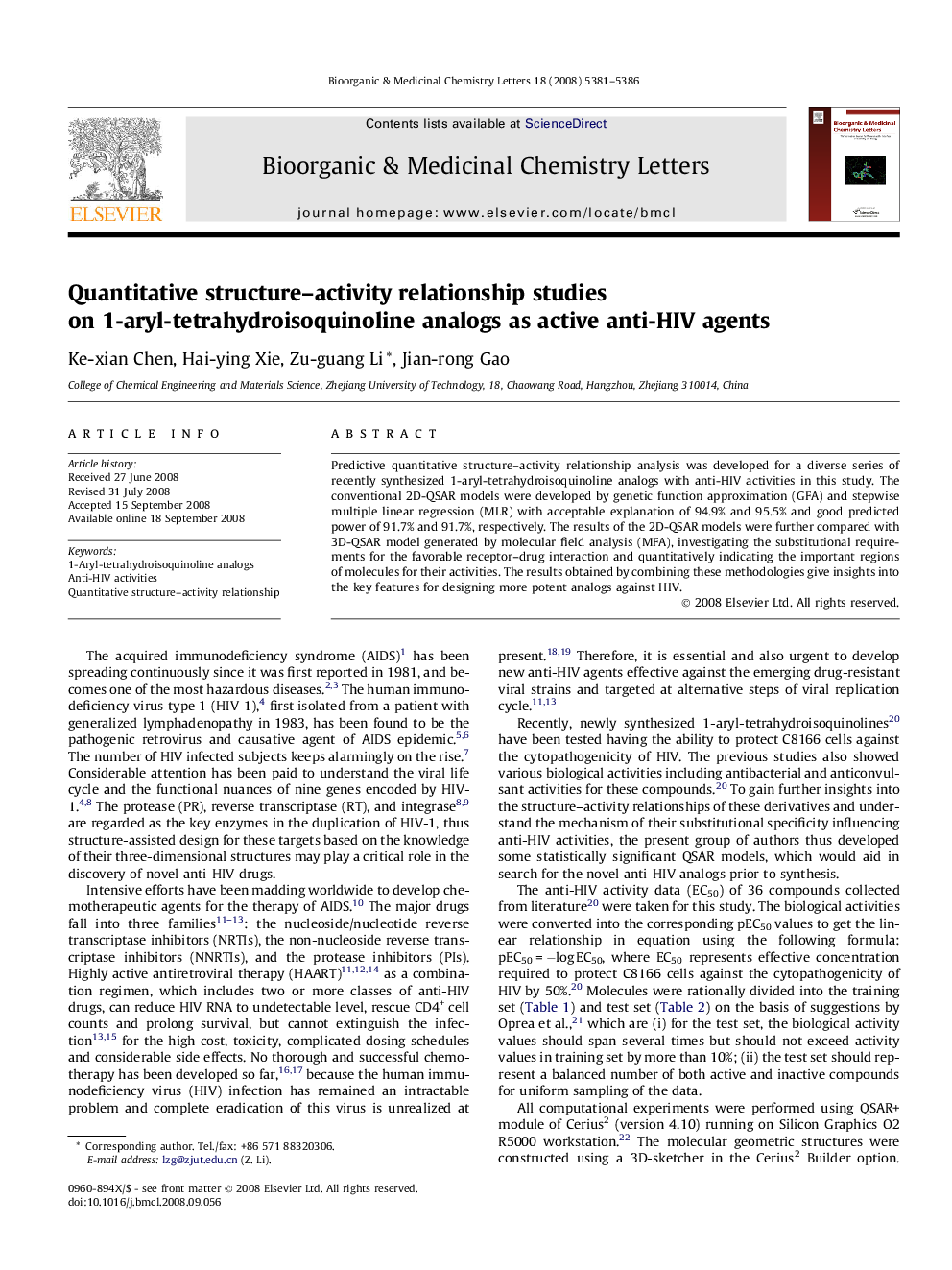| Article ID | Journal | Published Year | Pages | File Type |
|---|---|---|---|---|
| 1364739 | Bioorganic & Medicinal Chemistry Letters | 2008 | 6 Pages |
Predictive quantitative structure–activity relationship analysis was developed for a diverse series of recently synthesized 1-aryl-tetrahydroisoquinoline analogs with anti-HIV activities in this study. The conventional 2D-QSAR models were developed by genetic function approximation (GFA) and stepwise multiple linear regression (MLR) with acceptable explanation of 94.9% and 95.5% and good predicted power of 91.7% and 91.7%, respectively. The results of the 2D-QSAR models were further compared with 3D-QSAR model generated by molecular field analysis (MFA), investigating the substitutional requirements for the favorable receptor–drug interaction and quantitatively indicating the important regions of molecules for their activities. The results obtained by combining these methodologies give insights into the key features for designing more potent analogs against HIV.
Graphical abstractStatistically significant QSAR models have been developed for anti-HIV 1-aryl-tetrahydroisoquinoline analogs using GFA, stepwise-MLR, and MFA-G/PLS techniques. The results obtained by combining these methodologies gain insights into the structural requirements for anti-HIV activity of this class.Figure optionsDownload full-size imageDownload as PowerPoint slide
